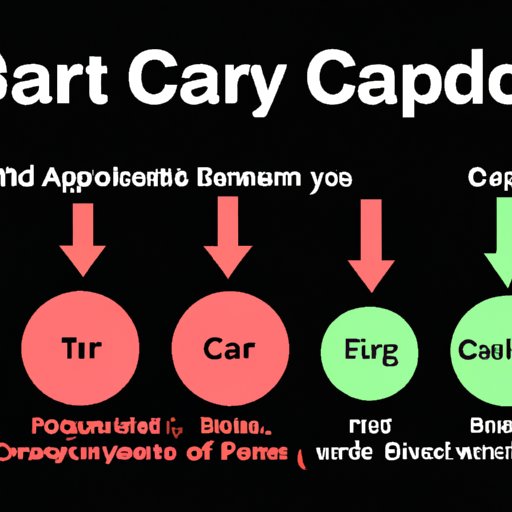
Introduction
Carb cycling is a dietary approach that involves alternating between high and low carb days. This method has gained popularity due to its ability to improve energy, enhance fat loss, and even improve athletic performance. The purpose of this article is to provide an in-depth guide to carb cycling, including strategies for beginners, athletes, and tips and tricks for hitting your fitness goals.
The Basics of Carb Cycling: A Guide to Maximizing Your Energy and Fat Loss Potential
The science behind carb cycling is based on the body’s response to carbohydrate intake. When carbohydrates are consumed, they are broken down into glucose, which is then used as a primary fuel source for the body. However, when carbohydrates are consumed in excess, the body will store the excess glucose as glycogen in the muscles and liver, or as fat. The goal of carb cycling is to strategically alternate between high and low carb days, allowing the body to use glycogen stores for energy on high carb days while utilizing stored fat on low carb days.
Benefits of carb cycling include improved energy, enhanced fat loss, improved insulin sensitivity, and even improved athletic performance. Additionally, carb cycling allows individuals to continue enjoying carbohydrates, which can make dieting more sustainable long-term.
When it comes to finding the best diet for carb cycling, it is important to choose a plan that is sustainable and fits your lifestyle. Popular options include the ketogenic diet, paleo diet, and flexible dieting. Ultimately, the best diet for carb cycling is one that you can stick to, while still meeting your carb and calorie goals.
The Lowdown on Carb Cycling: How to Plan Your High and Low Carb Days
Before you start carb cycling, it is important to determine your macronutrient goals. This will vary based on your goals and body composition. Once you have determined your macronutrient goals, you can begin planning your high and low carb days.
On high carb days, the goal is to consume the majority of your carbohydrates around your workouts, when the body is primed for glycogen storage. This can include consuming carbs before, during, and after workouts. On low carb days, the goal is to limit carbohydrate intake and focus on consuming protein and healthy fats to keep you feeling full.
It is important to understand and account for different sources of carbohydrates when planning your meals. Complex carbs, such as sweet potatoes, rice, and oats, are ideal choices for high-carb days as they provide long-lasting energy. Simple carbs, such as fruit and sugar, can be used as a quick source of energy during high-intensity workouts. On low-carb days, it is important to focus on non-starchy vegetables such as spinach, broccoli, and cauliflower.
Carb Cycling for Athletes: Enhancing Performance & Recovery with a Strategic Carb Plan
Athletes can benefit greatly from carb cycling, especially when training at high intensities. By strategically consuming carbohydrates before, during, and after workouts, athletes can optimize their glycogen stores and improve performance. Additionally, consuming carbs post-workout can improve recovery by replenishing glycogen stores and reducing muscle breakdown.
When planning carbs around training and events, it is important to assess the intensity and duration of the workout or event. Longer and higher intensity events will require more carbohydrates, while shorter and lower intensity events can be fueled with fewer carbs. Additionally, it is important to consume carbs in the form of easily digestible sources for optimal performance, such as sports drinks or gels.
The Ins and Outs of Carb Cycling: Tips and Tricks for Hitting Your Fitness Goals
While carb cycling can be an effective method for reaching your fitness goals, it can also be challenging to stick to. Here are some tips and tricks for staying on track:
Managing the mental aspect of carb cycling can be a challenge. It is important to remember that carb cycling is not a diet, it is a lifestyle. Celebrate your successes and don’t beat yourself up over slip-ups.
Tracking progress and keeping yourself accountable can be a helpful tool when carb cycling. Keep a food journal or use an app to track your progress, and weigh yourself regularly to keep track of progress.
Eating with others can also be a challenge when carb cycling. Plan ahead and bring your own food if necessary, and communicate with family and friends about your goals and needs.
Common pitfalls to avoid include not consuming enough carbohydrates on high carb days, consuming too many carbohydrates on low carb days, and not accounting for hidden carbohydrates in sauces and condiments.
The Ultimate Carb Cycling Meal Plan: A Detailed Example of What to Eat on High and Low Carb Days
Here’s an example meal plan to get you started on carb cycling:
High Carb Day:
- Breakfast: Oatmeal with fruit and protein powder
- Lunch: Chicken stir-fry with brown rice
- Pre-workout snack: Apple with almond butter
- Post-workout shake: Protein powder, banana, and almond milk
- Dinner: Turkey chili with sweet potato
Low Carb Day:
- Breakfast: Scrambled eggs with spinach and avocado
- Lunch: Grilled chicken salad with mixed greens and vegetables
- Snack: Celery with hummus
- Dinner: Salmon with asparagus and quinoa
- Dessert: Dark chocolate
Remember, the key to successful carb cycling is planning and preparation. Make sure you have plenty of healthy food options on hand and plan your meals ahead of time to stay on track.
Conclusion
Carb cycling is a strategic approach to eating that allows individuals to maximize their energy and fat loss potential while still enjoying carbohydrates. By alternating between high and low carb days, individuals can optimize the body’s response to carbohydrate intake and improve athletic performance and recovery. While carb cycling can be challenging, with proper planning and preparation, it can be a sustainable and effective method for reaching your fitness goals.





